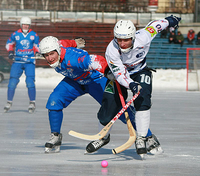
Bandy (Russia, United Kingdom, Estonia)
- Name of sport (game): Bandy
- Name in native language: Bandy
- Place of practice (continent, state, nation):
Finland, Kazakhstan, Russia, Sweden, Germany, Norway, USA, Canada, China, Czech Republic, Estonia, Great Britain, Hungary, Japan, Latvia, Slovakia, Somalia, Switzerland, Ukraine, Belarus, Kyrgyzstan, Mongolia, The Netherlands, Lithuania, Afghanistan, Armenia, Colombia, India and more.
- History:
Source: https://www.bandyinolympics.com/history/
As most ancient and medieval evidence hockey refers to curved shaped sticks and a ball, bandy can claim to be the oldest team hockey sport on ice.
Skates made of animal shack bones 2000 BC and irrigated ponds are found in Hungary, although yet no final proof of ball hockey on ice using skates. Most concrete evidence suggests ball hockey on plains or frozen ponds without skates.
Historians suggest that the oldest branch of ball-sports is hockey sports. The ball and a curved stick describe them. Curved shaped crooks (the shepherds crook) were used as a stick. In summer time it was played on plains, and wintertime on frozen ponds. Bandy’s twin summer sports hockey (FIH), Ireland’s hurley, Scotland’s shintey, and Wales’ bando can in a way claim to be the oldest team sports. This is based on e.g. the mural illustration of ball hockey found in excavations in Egypt originating 2600 BC.
Unlike in ancient Greece, the most common ancient Chinese sports were ball games. Buda (field hockey) was played in the Tang dynasty (618-907 AD). Buda later developed into Chinese golf. The Daur people in the north played Beikuo (field hockey) for 1000 years. In 2004 FIFA recognized that football originates from China. Cuju (soccer) appeared in the Warring State period (476-221 BC) to the Ming Dynasty (1368-1644 AD). The inflatable ball was invented 200 AD. This innovation is probably the greatest sports innovation in history.
Football on ice emerges in China. When the 2000-year-old cuju (soccer) faded, the Manchurians in the north created football on the ice. This was during the Manchurian Qing Dynasty (1644-1912 AD). But cuju on ice appears to be without a stick. In North Asia, bandy is the main winter heritage sport.
Evidence suggests that ball hockey on the ice was played without skates, or by using simple skates made of animal shack bones. Indigenous tribes in North America played with curved sticks. They pressed the stick into a curved shape using animal sinew. It was considered cheating keeping the sinews on the stick. According to the legend, this was the start of lacrosse. The Vikings on Iceland (Knattleikur) played ball hockey with curved sticks. 1st evidence of ball hockey skates appears to be 1000 AD found in Russian monasteries.
Joseph Strutt’s book from 1801: Sports and Pastimes describe a game called bandy appear on the British Isles from 14c.
West Europe, particularly the British Isles, would later develop ball hockey on modern skates, which today is known as bandy. Interchangeably, depending on the Isles’ geographic area, it was called hockey on ice, hurley on the ice, shintey on ice or simply bandy.
Many sports got their modern rules codified in the era of the British Empire. The same applies to bandy. Evidence from Cambridgeshire in England suggests formal competition bandy from the mid 18c. No written codes are found, but historians suggest that there were standard rules agreed upon prior to each competition. With regular bandy matches from 18c, bandy can demonstrate coherent sport-competitions for at least 250 years.
During 19c, bandy was played between bandy clubs like Bury Fen, Virginia Waters, Winchester, and Northampton. Well-known football clubs like Sheffield United (1855) and Nottingham Forest (1865) even had bandy in their names. Oxford University claims that the 1st Varsity Match held 1885 in St Moritz between the Oxford and Cambridge University was with bandy rules.
Charles Goodman Tebbutt from Bluntisham in the Fens codified modern bandy rules. He came from the bandy stronghold in Cambridgeshire, England in 1891/92. Tebbutt campaigned successfully and European nations adopted the rules. In 1891 Tebutt’s club, Bury Fen played a team from Haarlem in the Netherlands. Following this, the Amsterdamsche Hockey en Bandy Club (AH&BC) was established 1892 and the Netherlandsche Hockey en Bandy Bond 1898. Four Dutch (field) hockey clubs still keep bandy in their official name e.g. Breda Hockey en Bandy Club (BH&BC) established 1905.
Prior the Great War eight continental European nations competed in European Championships up until 1913 in Switzerland. In parallel, the Nordic countries participated in the Nordic Games.
At the same time, Canadians rules hockey emerged in North America. Governor General of Canada, Frederick Stanley commissioned the famous trophy 1892. The USA joined Canadian Rules hockey but had back in history played ball hockey. Simplified one can say there was Canadian rules hockey in North America and Anglo-Russian rules hockey (bandy) in Europe and the Asian part of the Russian Empire (later USSR). As mentioned, both sports (confusingly today) used the official name ice hockey.
Canadian hockey was well organized and established the International Ice Hockey Federation (IIHF) 1908. The IIHF managed to get a bridgehead in the Summer Olympic in Antwerpen 1920. Antwerpen had a small sheet ice venue.
Bandy was part of the Winter Olympic precursor The Nordic Games 1901 – 1926. But it is fair to say that international bandy was not as well organized internationally compared to that of ice hockey.
Subsequent the IOC decision 1924 to not include bandy in the Chamonix Games, the Nordic national ice hockey federations changed their official name to bandy. USSR however, kept the name hockey with the ball. More importantly bandy lost entire nations and its players to ice hockey.
Bandy has a strong history and tradition. The IOC decision in 1924 to exclude bandy was influenced by the rivalry between Sweden and the IOC. Outside the aegis of the IOC, bandy was surprisingly strong until the late 1960s. It was not only a large winter sport but among the larger of all sports in the USSR and the Nordics. In terms of nations it, however, lost ground in continental Europe 1924-1971. It lost continental European nations and its players to ice hockey. Facing the overwhelming resources of the IOC bandy was bent, but not beaten. These new ice hockey nations (based on bandy tradition), with the exception of Czechoslovakia, could not match the North Americans. Thanks to affordable ice and synergies with bandy, the Nordic countries, and the USSR/Russia were the only nations that could challenge the Americans in ice hockey. Thanks to bandy.
Norway accelerated bandy as an Olympic demonstration sport up to 1952. The backdrop gives insight into the rationale. The USSR joined the IOC 1949. No other winter sport could better reinforce the objectives of Olympism.
The winter sports universe was (and is) small compared to summer sports. Exception was bandy. In the 1950s and 1960s, bandy was among the largest sports in 3-4 of the 12 leading nations. This is an unusual observation in winter sports. Even more astonishing is that the IOC refused to include one of the few sports that had strong fundamental backing and could help fulfill its mandate (Olympic Principles).WORLD CHAMPIONS:1957 USSR, 1961 USSR, 1963 USSR, 1965 USSR, 1967 USSR, 1971 USSR, 1973 USSR, 1975 USSR, 1977 USSR, 1979 USSR, 1981 Sweden, 1983 Sweden, 1985 USSR, 1987 Sweden, 1989 USSR, 1991 USSR, 1993 Sweden, 1995 Sweden, 1997 Sweden, 1999 Russia.
WORLD CUP CHAMPIONS: 1974 Sandviken (Swe), 1975 Broberg (Swe), 1976 OLS Oulu (Fin), 1977 Broberg (Swe), 1978 Broberg (Swe), 1979 Edsbyn (Swe), 1980 Boltic (Swe), 1981 Boltic (Swe), 1982 Jenisej (USSR), 1983 Broberg (Swe), 1984 Jenisej (USSR), 1985 Boltic (Swe), 1986 Boltic (Swe), 1987 Västerås (Swe), 1988 Vetlanda (Swe), 1989 Västerås (Swe), 1990 Zorkij (Rus), 1991 Edsbyn (Swe), 1992 Sirius (Swe), 1993 Vetlanda (Swe), 1994 Västerås (Swe), 1995 Boltic (Swe), 1996 Boltic (Swe), 1997 Västerås (Swe), 1998 Falun (Swe), 1999 Hammarby (Swe).
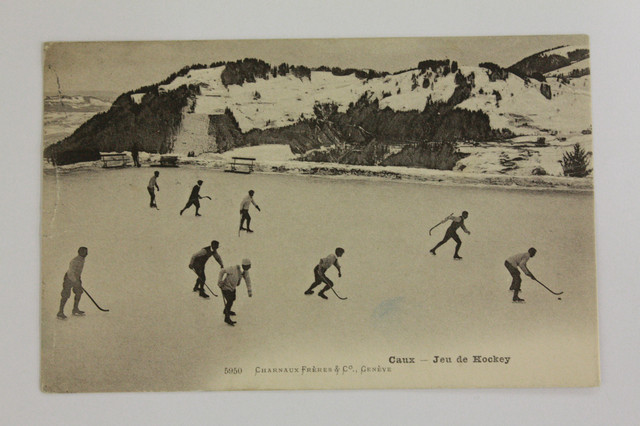 Antique Bandy Shinty Game - Caux-Jeu de Hockey - 1906 - Geneve - Switzerland
Antique Bandy Shinty Game - Caux-Jeu de Hockey - 1906 - Geneve - Switzerland - Description:
Source: https://www.bandyinolympics.com/rules/
Light Installations On Existing Venue
Bandy use existing ball-sport venues. The playing field is spooled with ice. Therefore it can easily be included in the Games for little cost. The standard ice surface used is about 100 by 60 meters, but flexible rules allow for sideline length between 110 – 90 meters and deadline width between 45 – 65 meters. The sidelines are hedged by 15 cm high light demountable low-borders. The demountable low-borders and goals are not fixed, but give in at impact, for safety.
The goal-post height is 2,1 meter and crossbar width 3,5 meter. The ball diameter is 63 mm with a weight of 60 g. The large goal compared to the small ball give bandy goaltenders a greater challenge, but also an opportunity for agile artistry. The speed of the ball and the speed of the opposing team’s forwards ( and light protection) makes the goaltender generally respected for his or her courage.Source: https://www.tutorialspoint.com/bandy/bandy_rules.htm
There are 18 official rules which are applied in all styles of bandy. However, there are slight modifications for women, juniors, and veterans.Players and Officials
Each team consists of a maximum of 11 players (not counting substitutes). Among them one is the goalkeeper. A team is not eligible to play if it has less than eight players.
It is allowed for the goalkeepers to touch the ball with their bare arms but only inside the penalty area present in front of the goal post. Out of many possible outfield positions, players (except the goalkeeper) are positioned according to their coach’s advice.
Players can be replaced by substitutes at anytime during the course of the game. Substitutions can be done without notifying the referee and can be performed while the ball is in the match. However, if the substitute enters the field before his teammate has left it, it results in a five-minute ban.
A team can bring up to four substitutes into the game and one of these is mostly a substitute goalkeeper. The game is officiated by a referee, the authority and enforcer of the rules, whose decisions are final. There may be one or two assistant referees along with the main referee.Bandy − Equipment
The players are equipped with a pair of skates, a helmet, a mouth guard. Besides these, goalkeeper also has to wear a face guard. Both the teams should wear uniforms which are easily distinguishable and the color of the skates, sticks, and any tapes etc. must be different than that of the ball.
In addition to the above mentioned equipment, various protections are used to protect the essential parts of the body like knees, elbows, genitals and throat. Paddings are given in pants and gloves to provide extra protection.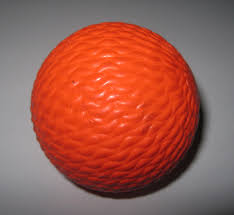
The Bandy Stick
The bandy stick is a very essential part of the sport. The stick should be built of good quality wood and must not contain any metal and sharp materials which can hurt other surrounding players.
This stick should be crooked and the bend of the blade has to be split up into five different dimensions, where one is the smallest bend and five is the largest. Bend number four is the most common size in professional bandy.
The bandy stick should not have similar colors to the ball, such as orange or pink. It should not be longer than 127cm (50 inches) and the breadth should not exceed 7cm (2.8 inches).Game duration and tie breaking measures
Bandy match can be played in two halves, each of 45 minutes duration. If every half of the match goes on smoothly and continuously without any abruption, then it means the clock is not stopped but it is under the control of referee to pause the match.
There is usually a 15-minute half-time break between halves. The end of the match is known as full-time. The referee keeps track of the time and he is the one who may make an allowance for time lost while substitutions, in case a player gets injured, or any other stoppages.
If the weather is too cold or unfavorable, the referee can break the match into shorter thirds or quarters instead of 45 minute halves. For example, in the extremely cold 1999 World Championship, a few of the matches had to be played in four quarters of 15 minutes each along with extra-long breaks in between the quarters.
If the game ends in a draw, the time may be increased to further 15 minute periods for the match. If there’s a goal in this extra time, it is called a golden goal which results in the victory of team which scored the goal. If both the extra periods are over without any goals, then the referee has to organize a penalty shootout to finally end the game.
Although, in league competitions, if there is a draw, there is no increase in time and the game is set to tie with no winner.The ball in and out of play
If the match is going on and the ball is in the field, it is said to be ball in play. When the ball gets out of the field by one way or another, it is said to be ball out of play. These are the two basic phases of the game.
When the ball is out of play, six popular methods to resume the match are −
Face-off
Goal-throw
Free-stroke
Corner-stroke
Penalty shot
Stroke-off
Suppose the time runs out when a free stroke or penalty has to be executed, the player can still strike the ball but it must go into the goal without any interference in one try, or else there are no more retries and the game has to come to an end.Penalty shots and free strokes
Free strokes are awarded to a team in case the opposite team do any fault by not obeying the rule. Take an instance, where a player hits the opponent’s stick with his own stick, it is case of fault hence free strokes will be awarded.
Free-strokes can also be awarded if there is any incorrect execution of corner strikes, free-strikes, goal throws, and so on, or the use of incorrect equipment, like using a broken stick.
There may be such instance that if your team is doing in any offence and it is benefiting the other team, and then referee may continue the play as penalty, popularly known as playing an advantage. If no such situation is happening then referee may call back and penalize the offending team.
Let’s analyse another case. Suppose you are a defender and you attacked one of the other team members while defending, then that team will get a penalty shot in reward, provided there is a chance of goal.
No one except the goalkeeper has the advantage of kneeling down to block the ball and it is not in rule also for other players to block the ball with their skates or to hook the other player with it.Warnings and Penalties
Cases such as misbehaving with other players, blocking the ball, or attacking the other team members can attract penalty of 10 minutes. This is indicated by the referee by showing a blue card.
In case a player gets penalties for three times, then he can no longer play that match, as it will be a personal penalty. Another player can replace him but not before at least 5- 10 minutes of the match.
There is also a penalty for abusing the other team members or for attacking them violently. This penalty is called full game penalty. This is indicated by a red card. Once it is superimposed on a team player, he can no longer play the match and no substitute will be allowed in his place.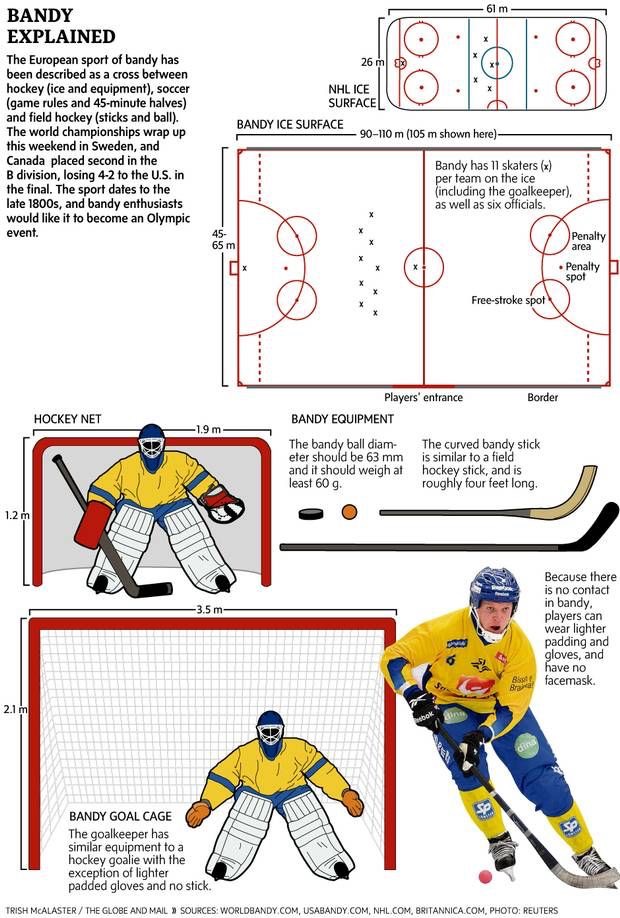
Source www.bandyinolympics.comrules
- Current status:
FIB has currently 28 member nations. Compared to many of the Olympic Disciplines, bandy has better reached the stringent 1973 Olympic Charter criteria: Real ongoing activity on 3 continents and 25 nations. This is done on own machine. And without the huge resources provided to sports in the Olympic Games.
Data reveal that many Olympic Disciplines have not reached this 45-year-old criterion. They list surprisingly many National Federation sections (NFs) that organize Disciplines at the national level. But the majority of the athletes are in very few NFs. Close to 97 % of all athletes are registered in 65 NFs (out of 1300). Ice hockey, alpine skiing, cross-country skiing, and bandy have most NFs in this size stratum. Close to 99 % are in 159 NFs. On average 10 NFs on each of the 16 Disciplines (including bandy), but they are not evenly distributed. Many Disciplines have very few NFs with real ongoing activity. Some Disciplines have in reality none.
FIB organizes 15-18 events annually. Athletes from 4 continents meet 2019. Over 30 000 active athletes, 13 years or older, compete to qualify among the 2400 quota of athletes. The major activity in bandy, as all ball sports, is still domestic within each country. Many winter Olympic Disciplines have little domestic activity. Essentially all activity is international portraying larger size than reality. The Olympic Charter requires real ongoing activity also nationally. Domestic activity is important for healthy lifestyles and a key incentive for the authorities to apply for the Winter Games.Current WCS senior qualifications alphabetically:
Division A, Men
A Pool: Finland, Kazakhstan, Russia, and Sweden. B Pool: Germany, Holland, Norway, and the USA
Division B, Men
Canada, China, Czech Republic, Estonia, Great Britain, Hungary, Japan, Latvia, Slovakia, Somalia, Switzerland, and Ukraine. Previous participants: Belarus, Kyrgyzstan, and Mongolia.
Women WCS: China, Finland, Japan, Norway, Russia, Sweden, Switzerland, and the USA. Previous participants: The Netherlands and Canada.
Lithuania has participated in youth WCS. Other members: Afghanistan, Armenia, Colombia, and India. - Contacts:
The Federation of International Bandy
c/o Bo Nyman, FIB Secretary General
Box 91
SE 826 23 Söderhamn
Sweden
Webside: http://www.worldbandy.com/
Fb: https://www.facebook.com/bandyolympics/
Instagram: https://www.instagram.com/bandyinolympics/
Twitter: https://twitter.com/bandyinolympics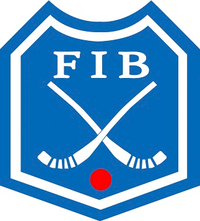
The Finnish Bandy Federation
Maapadontie 3 LT 2
00640 Helsinki
FINLAND
Deutscher Bandy-Bund e.V.
Fb: https://www.facebook.com/DeutscherBandyBund/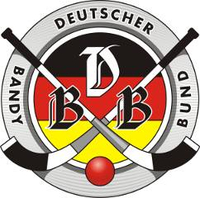
American Bandy Association
Webside: https://www.usabandy.com/
Canada Bandy
Morris Glimcher
PresidentThis email address is being protected from spambots. You need JavaScript enabled to view it.
Mailing address
17-30 Victor Lewis Drive
WINNIPEG, Manitoba
Canada
R3P 1H5
Webside: http://www.canadabandy.caHungarian Bandy Federation
2011.05.29. Vasárnap 21:00 - 22:30, Gyakorló
A pályák címe: 1146 Budapest, XIV. ker., Istvánmezei u. 3-5. (Kisstadion, Millenáris, Gyakorló)
Webside: http://www.bandy.hu/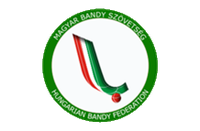
Norges Bandyforbund
Webside: https://bandyforbundet.no/?p=97&mID=71&mAct=0
Svenska Bandyförbundet
Webside: https://www.svenskbandy.se/
Address: Idrottens Hus, Skansbrogatan 7, Stockholm
Leveranser och Företagspaket: Östgötagatan 98 D, 116 64 Stockholm
Telefon: 08-699 6000 (växel), direktnummer nedan
Bankgiro: 713-20 61
Organisationsnummer: 818500-2733
Email:This email address is being protected from spambots. You need JavaScript enabled to view it. 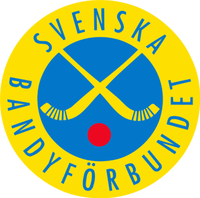
Українська федерація
Webside: http://www.ukrbandy.org.ua/
Адреса:49081, м. Дніпропетровськ, вул. Артельна, 2/304.
Телефон:+358401870360
Fb: https://www.facebook.com/groups/ukrbandy/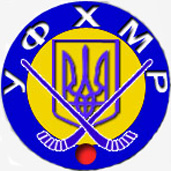
Great Britain Bandy Association
Webside: http://www.gbbandyfederation.uk/home-page
Fb: https://www.facebook.com/greatbritainbandyassociation/Czech Association of Bandy
Fb: https://www.facebook.com/czechbandy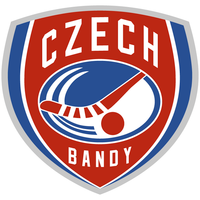
China Bandy Federation

Bandy Polska
Fb: https://www.facebook.com/BandyPolska/Slovak Bandy
Fb: https://www.facebook.com/Slovak-Bandy-642621149275457/?eid=ARADQC7depbKTKRvTRJvmXQTVyq1oLMqpPBAlHHCCAeABBFrDvgvqrep6DuotYTQUioZxeWVQfUtKu3C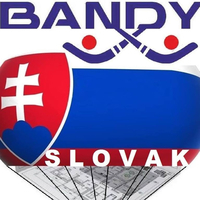
Swiss Bandy
Fb: https://www.facebook.com/swissbandy/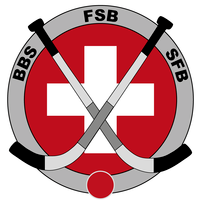
Федерация хоккея с мячом России, ФХМР (FKhMR)
105064, Москва, ул. Казакова, д. 27, оф. VI
Тел./факс: (499) 265-32-45
Webside: http://www.rusbandy.ru/
Fb: https://www.facebook.com/rusbandyru/
Wk: https://vk.com/rusbandy_ru
Twitter: https://twitter.com/rusbandy
Youtube: https://www.youtube.com/user/Rusbandy
Instagram: https://www.instagram.com/rusbandy/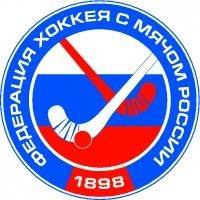
Bandy Association of Indian
Fb: https://www.facebook.com/1282168178474486/photos/a.1282169238474380/1300584519966185/?type=3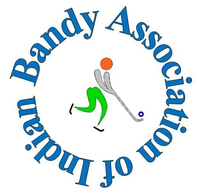
- Sources of information :
Books:
Arlott, John, ed. (1975). "Bandy". The Oxford Companion to Sports & Games. Oxford: Oxford University Press.
Arne Argus: "Bandy i 100 år", 2002, ISBN 91-631-3005-X, p. 36 (in Swedish)Articles:
https://www.nytimes.com/2010/01/29/sports/olympics/29bandy.html
Bandy in Finland - http://www.finbandy.fi/fi/yhteystiedot/the-finnish-bandy-federation-in-english/
https://thehockeywriters.com/bandy-the-other-ice-hockey/
https://cafebabel.com/en/article/bandy-ice-hockey-in-sweden-goes-big-in-europe-5ae00544f723b35a145ddc05/
https://www.thelocal.se/20160229/bandy-how-swedens-little-known-sport-is-winning-convertsVideos:
https://www.youtube.com/watch?v=yIl9B_L9y6I
https://www.youtube.com/watch?v=KUaxDB0ea3M
https://www.youtube.com/watch?v=3LHSMaHVy5I
https://www.youtube.com/watch?v=ZEhcFvFw9v0
https://www.youtube.com/watch?v=RN0PeNnwyqA - Gallery:
- Documents:

